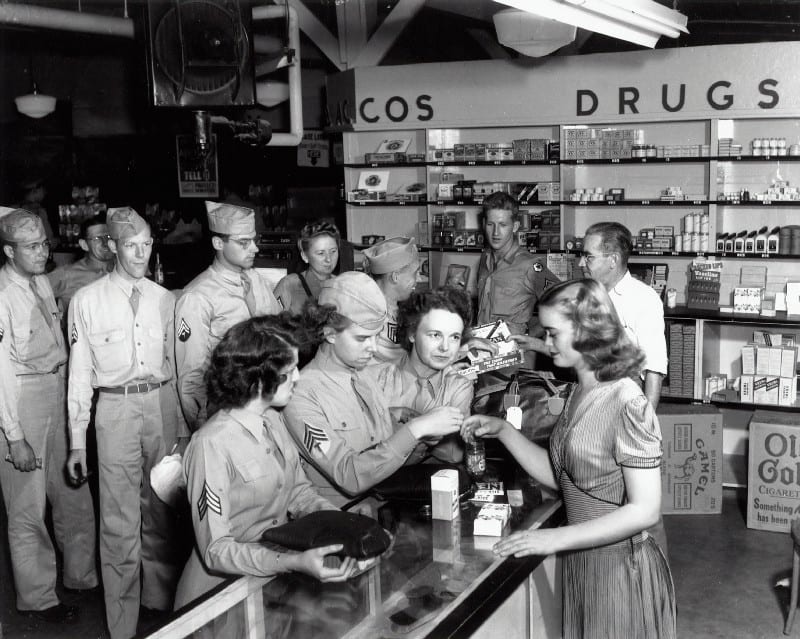How to de-sabotage communication in your meetings
When exploring how to communicate more effectively in meetings, we stumbled upon a golden archive that opened our eyes to the long-standing, poor productivity habits many organizations have been practicing for decades, and don’t even know it. We discuss the amusing parallels found in a once-classified CIA manual used to undermine enemies of the nation in World World II.

Sabotaging productivity
The CIA published and secretly distributed the “Simple Sabotage Field Manual” in 1944 to citizens sympathetic to the Allies living in Axis nations. The pamphlet outlined sixteen ways for everyday people to best sabotage the United States’ World War II enemies by impairing organizations’ productivity.
The suggested methods to purposely squash productivity are all-too-common behaviors found in modern-day organizations world-wide…
It was shared in an attempt to help the Allies reduce production in factories, offices, and transportation lines to weaken the country ultimately.

“Some of the instructions seem outdated; others remain surprisingly relevant,” says the description of the pamphlet on the CIA’s website. “Together, they are a reminder of how easily productivity and order can be undermined.”
The manual was declassified in 2008 and is available to the public. The irony is that the suggested methods to purposely squash productivity are all-too-common behaviors found in modern-day organizations world-wide, practices that contribute to ineffective communication and hinder efficiency.
We’ve chosen four of them to dissect below to shed light on the patterns and habits we unknowingly partake in that obstruct effective communication in meetings; then, we offer counter-suggestions for optimum communication.

“Timeless Tips for Simple Sabotage” CIA manual instructions:
- Make “speeches.” Talk as frequently as possible and at great length. Illustrate your “points” by long anecdotes and accounts of personal experiences.
- Bring up irrelevant issues as frequently as possible.
- Haggle over precise wordings of communications, minutes, resolutions.
- Refer back to matters decided upon at the last meeting and attempt to re-open the question of the advisability of that decision.

4 effective communication strategies for productive meetings.
1. Create an inclusive environment
Why do most people dread meetings? Among several reasons, it is usually because they feel they are a waste of their precious time and that they will be talked at—rather than being an active part of the conversation—about information that does not interest or pertain to them. In other words, they fear the meeting will be long, boring, and pointless.
And unfortunately, most meetings are. A study by the Harvard Business Review found that, of 182 senior managers surveyed among a range of industries, 71% said meetings are unproductive and inefficient; 62% said meetings miss the opportunity to bring teams together.
When you structure your meeting like a long-winded lecture, you are more likely to lose the interest and focus of the attendees. And when your talking points are backed by personal anecdotes rather than substantial evidence or data, people will lose interest. They want to have a purpose for taking time out of their day to be there.
Respect their time and express a desire for their contribution. A meeting should not be a one-person show. The best meetings are a collaborative experience. It is highly unlikely that people want to sit idly and listen to a speech of considerable length that they have little connection to. Create an inclusive environment by getting everyone involved. Ask for opinions and feedback about the objective you want to obtain. Open up the floor for brainstorming and collaborative discussion, and listen.
When people feel that they are an active part of the conversation and genuinely being heard, they are much more likely to participate and contribute proficiently.
2. Stay on topic
Clearly identify a purpose for the meeting you wish to call, then create a detailed agenda for it before the meeting—including start and end time—and any scheduled breaks and activities that will be included.
Outline the agenda with only relevant and essential topics that will be discussed, then follow it carefully. This will help to keep the conversation focused solely on what you need to discuss, which eliminates wasted time and the chance for attendees to lose focus on what needs to be accomplished. Bringing up irrelevant issues, especially frequently, significantly alters productivity and efficiency.
It is counterproductive to discuss anything in a meeting that is irrelevant to your purpose. Therefore, it is imperative to stick to your agenda and stay on topic to have the most successful meeting as possible. Stay focused on the goal, and redirect the conversation back to it if it strays off course. Only discussing the purpose of the meeting will heighten productivity, and staying on schedule ensures that everyone’s time is respected.
3. Decide and commit
Firm decisions make meetings productive. This includes making decisions about expectations before the start of the session, then explicitly communicating the agenda at the very beginning of the meeting so that everyone knows what to expect (in meeting topic and length), as well as setting guidelines for how the meeting will be run so that everyone is on the same page from the start. There should be no surprises.
When you are unprepared and fail to communicate the meeting structure and expectations, you risk wasting time bantering about trivial matters–for example, wordings of communications and minutes–that take away from the objective; it is inefficient communication.
An effective way to communicate better in meetings is to pre-determine a decider. This individual will serve as a facilitator, and their job is to help guide the conversation and ensure a clear understanding and concise consensus (when applicable) is reached by the end of the meeting that everyone respects.
It is important to note that not everyone will completely agree with all matters discussed in a meeting. And that’s okay. Resolutions should be respected by the group and left alone after decided to avoid stagnation, i.e., wasted time and low levels of productivity. Once a decision is made, recognize it and move on. The most productive meetings are focused on uninterrupted forward momentum. Therefore, digging up past matters from previous meetings that were already decided on do not contribute to effective communication in the present.
Productivity is delicate and necessary for a prosperous business. As discussed above, it can also be easily compromised. The danger comes when we are not aware that how we communicate can hinder it. Being aware of poor communication tactics, then, and how to correct them will help you to have more successful communication in your meetings, and therefore, get the most out of them.
Do you want to run more productive meetings?
Voltage Control facilitates design thinking workshops, innovation sessions, and Design Sprints. Please reach out at hello@voltagecontrol.com for a consultation.


